It is always a challenge to sustain interest in your garden over a prolonged season. In a white garden, the question of providing succession becomes ever more important.
As well as providing continuity of blossom, it is vital that the feeling of fresh growth predominates for as long as the season permits. Senescence and decay should be banished from a white garden for as long as possible – a feat that becomes harder as the year progresses.
Nevertheless, careful choices and combinations of white plants and some manipulation of their growth habits will allow you to sustain the illusion of an eternal spring throughout the summer and early autumn.
Jump to
- White flowers for spring
- White flowers for early summer
- White flowers for high summer
- White flowers for late summer
- How to make your white flower border last longer
Here's more white garden inspiration
34 white flowers to plant
White flowers for spring
Tulipa 'White Triumphator'
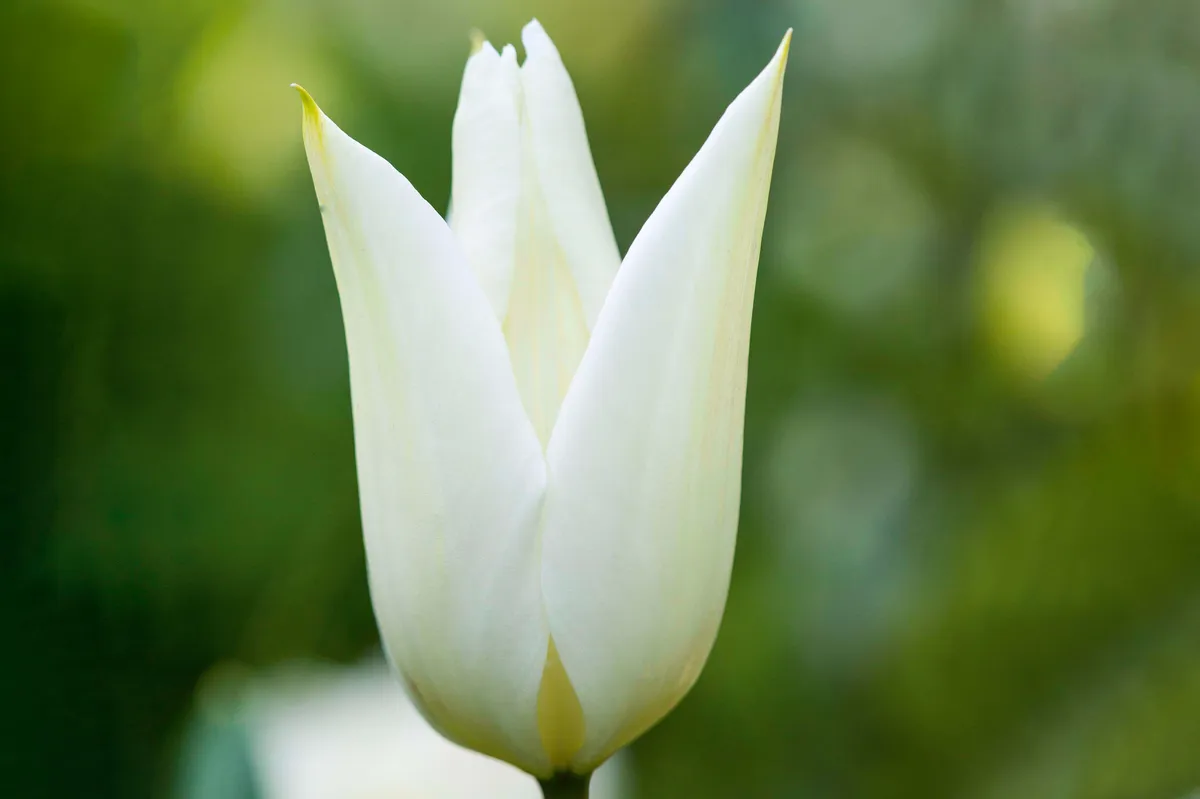
One of the most elegant tulips with a slender upright habit. Plant the bulbs before you have cut perennials down fully, so you can see where the gaps will be when the tulips flower. A detailed photographic record of the garden in spring will help hugely. Height (H) 60cm. AGM. RHS H7, USDA 3a-8b.
Read more on how to grow and plant tulips
Myosotis sylvatica 'Snowsylva'
Buy seeds from Chiltern Seeds (£2.95)
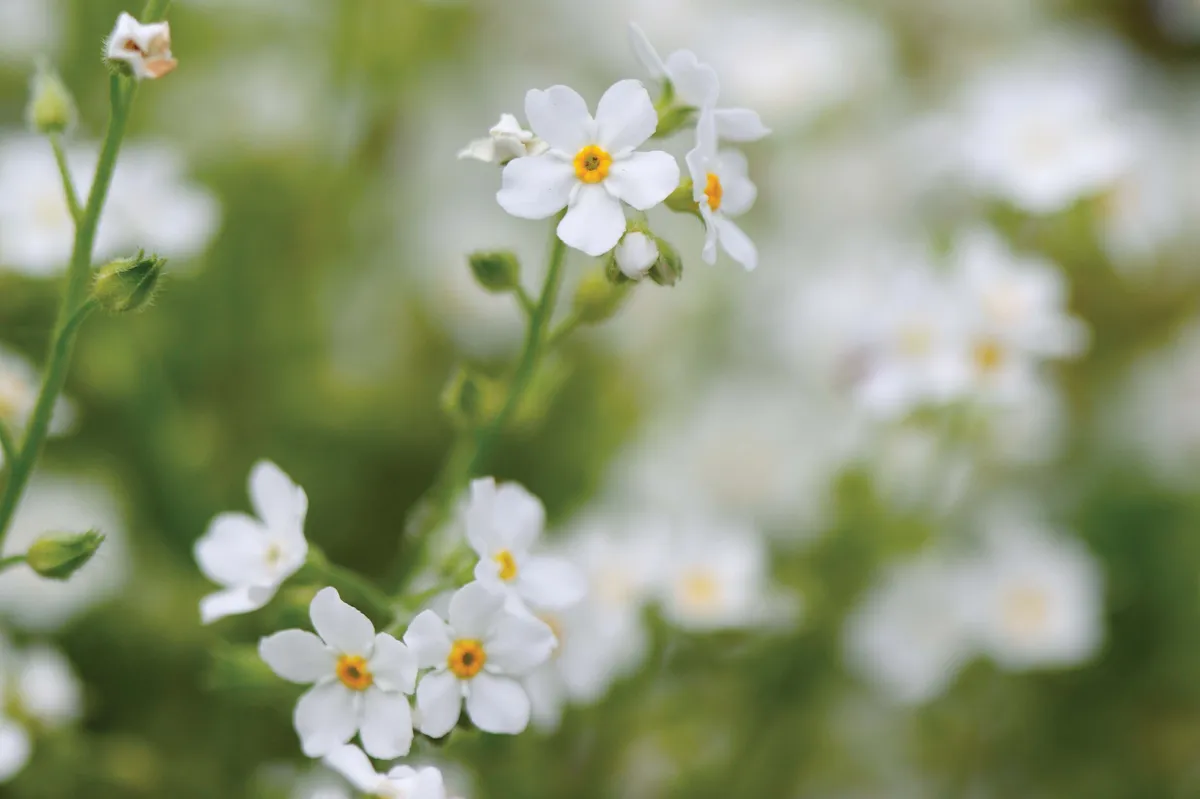
Forget-me-nots are great for temporary ground cover in spring, although most seed-strains are disappointingly compact. 'Snowsylva' will cover the ground nicely, the more so with successive self-sown generations. Occasional blue rogues may need to be pulled out promptly. H 20cm. Spread (S) 20cm. RHS H6.
Don't miss our forget-me-not plant profile
Cynara cardunculus

The cardoon is peerless for its silvery foliage contribution at tulip time, when plants of any substance are hard to come by. In a white garden, the foliage on its flowering stem can be enjoyed until the flowers start to open - at which point you should cut the flower stem back.
Alternatively, grow an edible artichoke to give an added incentive that avoids the chore of deadheading. H 2.5m. S 1.5m. AGM. RHS H6, USDA 7a-9b.
Crambe maritima
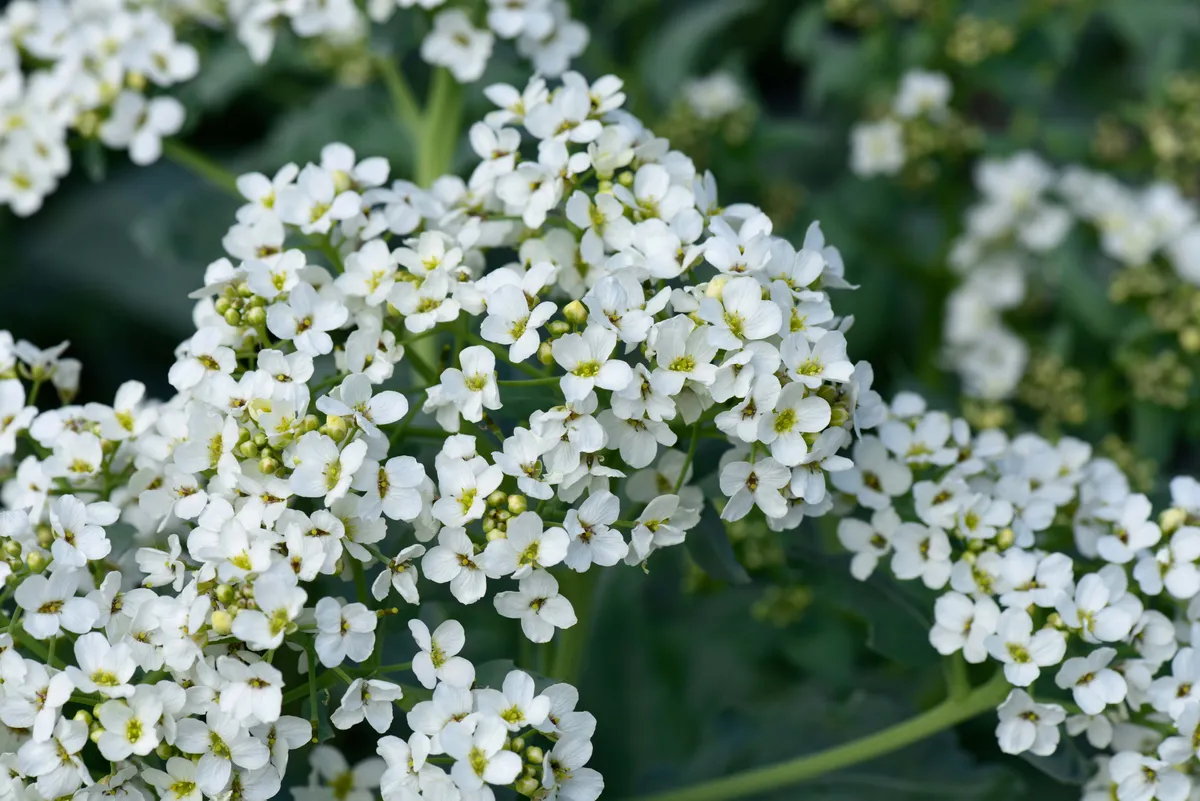
A denizen of shingle beaches, seakale prefers sharp drainage and makes an excellent plant for the front of a border. The young shoots are purple and become leathery grey with age, with irregular, torn-looking edges. White flowers bloom in May on strong stems. H 1.3m-plus. S 40cm. RHS H6, USDA 7a-9b.
Hesperis matronalis var. albiflora
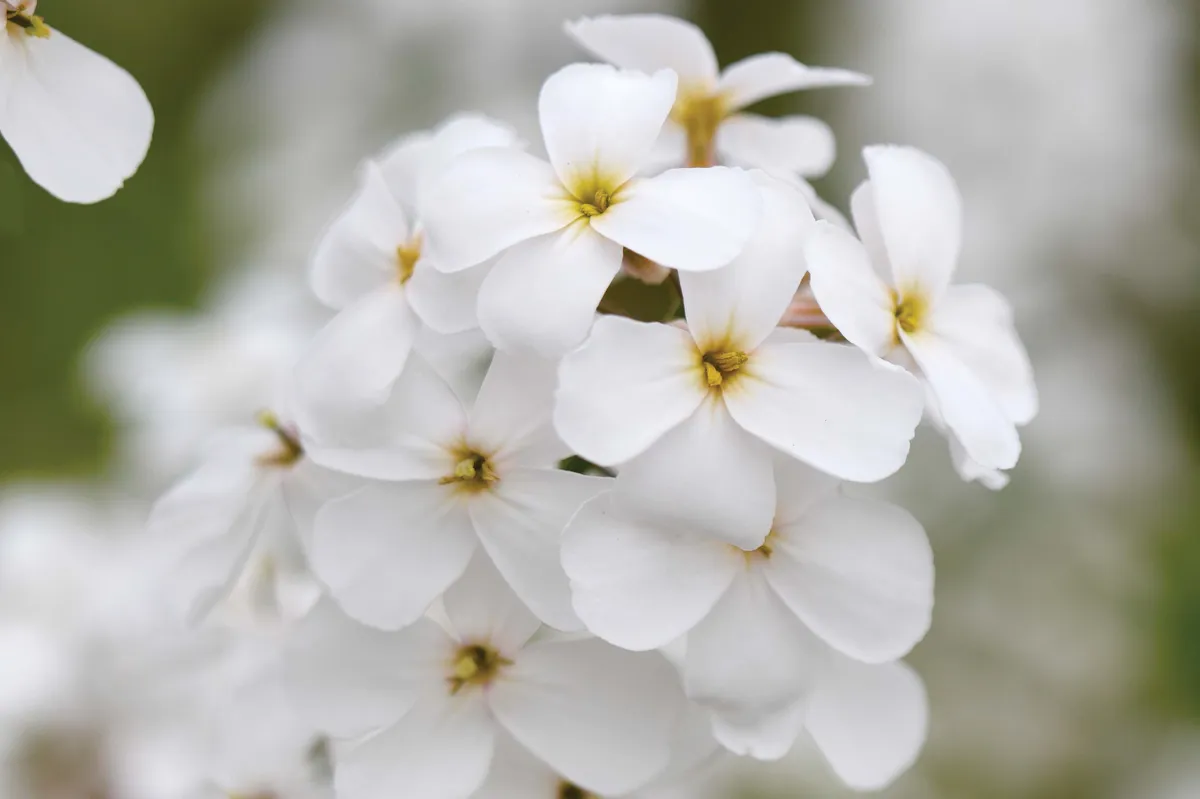
A substantial bedding plant in flower. It can be perennial, but we prefer to grow it as a biennial. Sow in spring, line out in a spare plot in the summer, then lift and transplant to the border in autumn,40cm apart. It works well with tulips. H 1.3m-plus. S 40cm.RHS H6, USDA 4a-9b.
Tulipa 'Purissima'
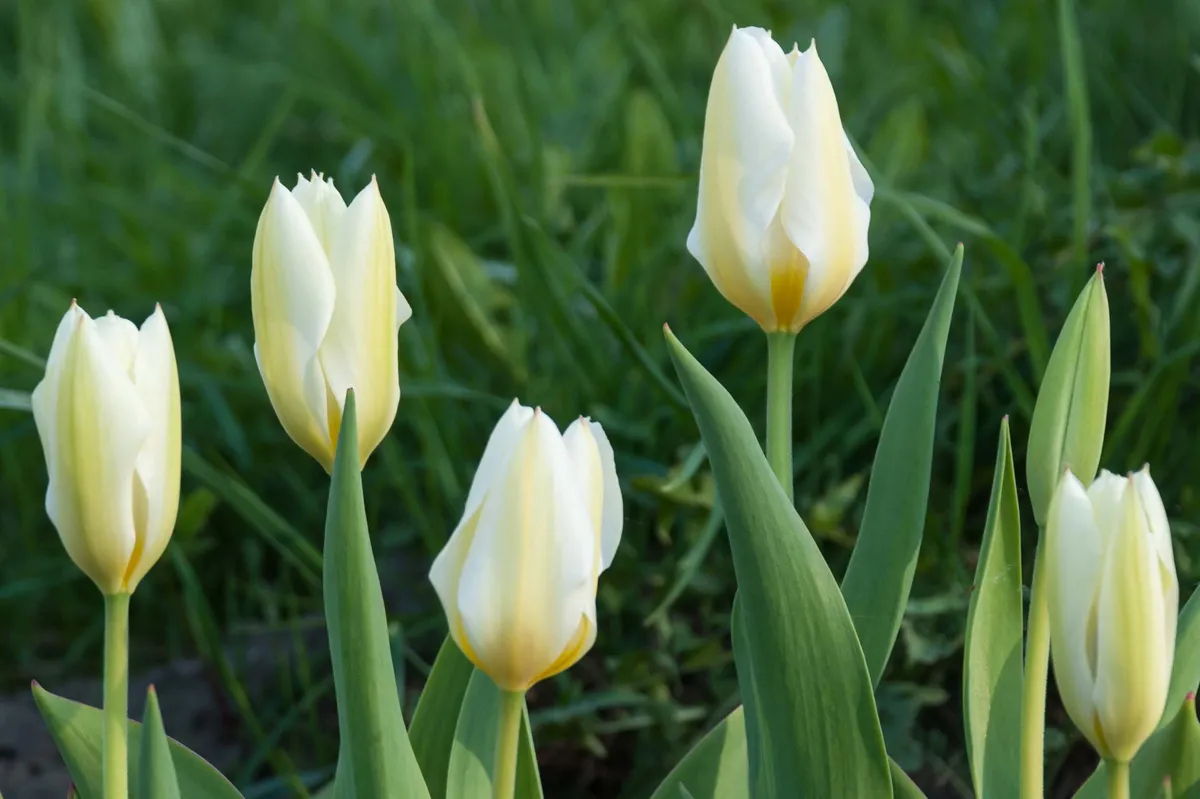
Possibly the best performing tulip, with large rummer-shaped flowers, strong stems and clean glaucous foliage. Flowers develop quickly from cream to pure white, have rounded petals topped with a small point and are very tolerant of rain. H 50cm. AGM. RHS H7, USDA 3a-7b.
White flowers for early summer
Omphalodes linifolia
Buy from Sarah Raven (£4.25)
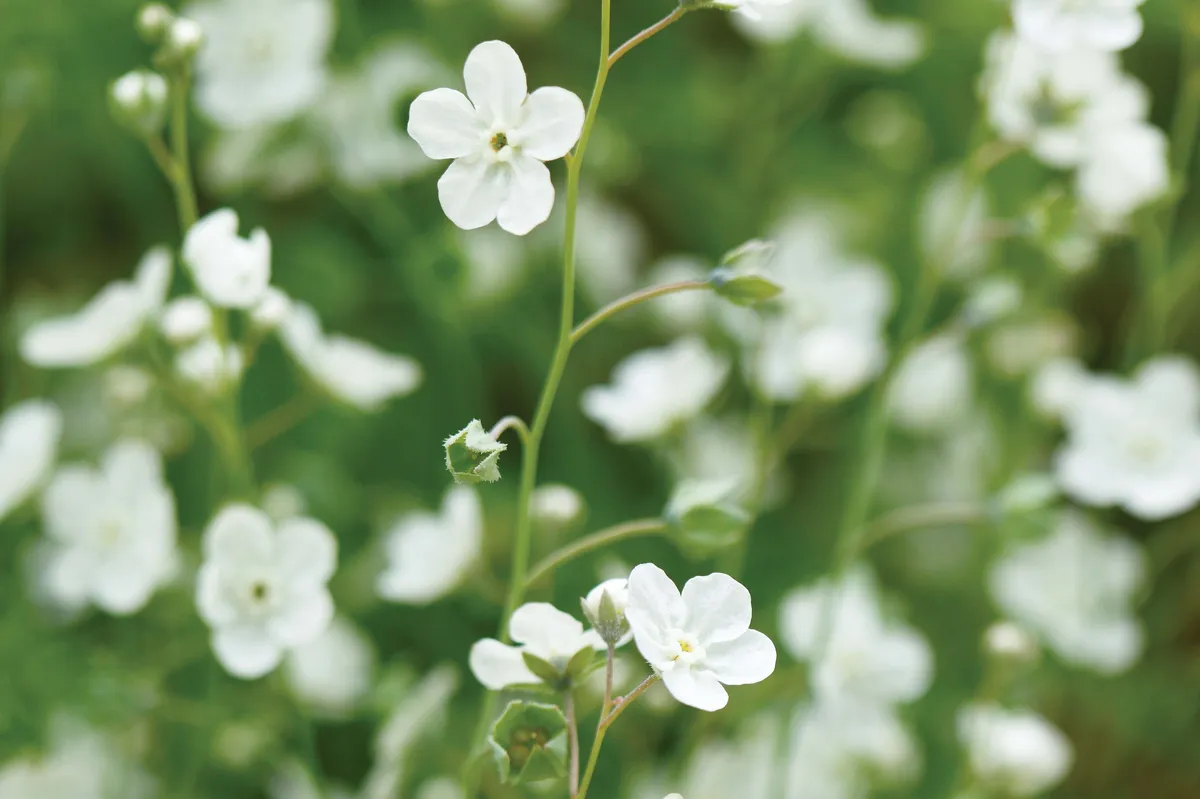
Small but perfectly formed annual with flowers of an exquisite biscuit-porcelain colour, proudly displayed above jade-green foliage. Its open structure allows it to be woven through perennials without fear of competition. Once established can self-sow, especially on light soils. H 30cm. S 25cm. AGM. RHS H4.
Eremurus 'Joanna'
Buy from Living Colour Bulbs (£12.00)
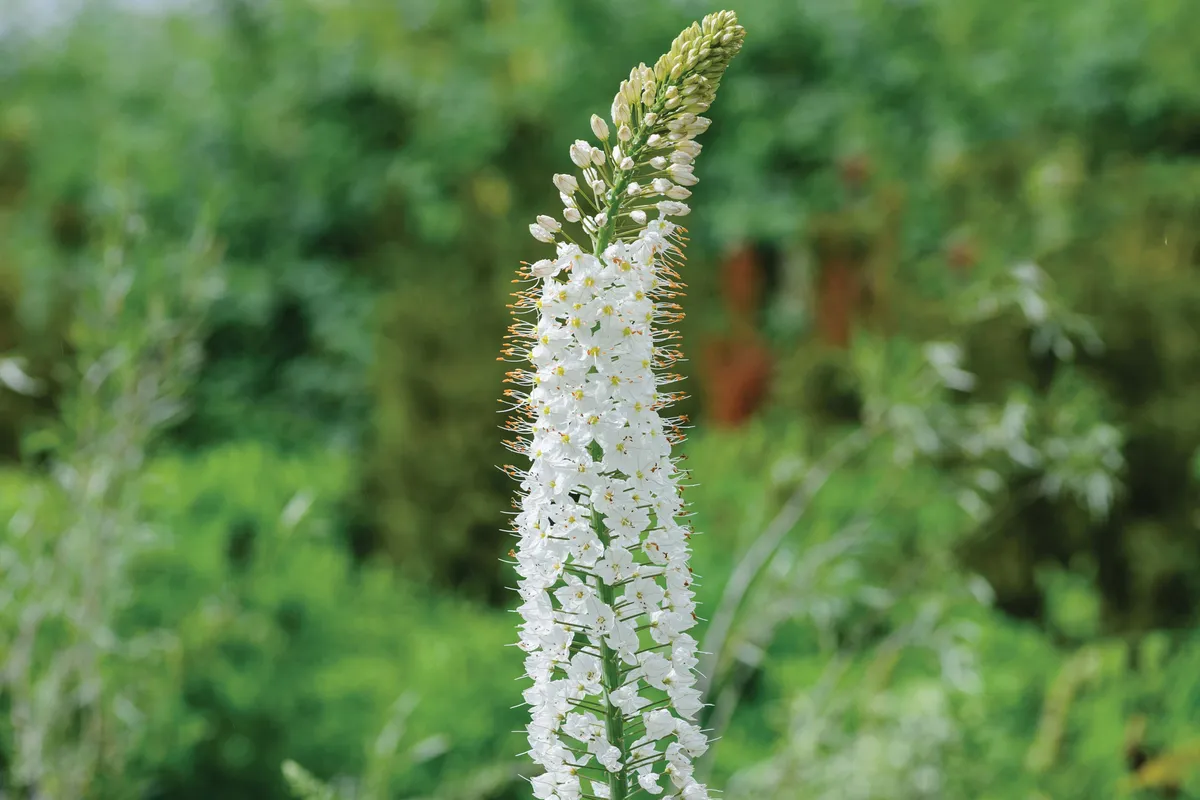
Among the most garden-worthy foxtail lilies, given good drainage. The scape can grow to over 3m, with the top metre a striking tapering cylinder of starry flowers. The basal leaves produced during the winter can become ugly in summer so mask with planting. Excellent with hesperis and alliums. H 3m. S 50cm. RHS H6.
Nigella damascena 'Miss Jekyll Alba'
Buy seeds from J.Parkers (£1.49), Sarah Raven (£1.95) and B&Q (£2.75)
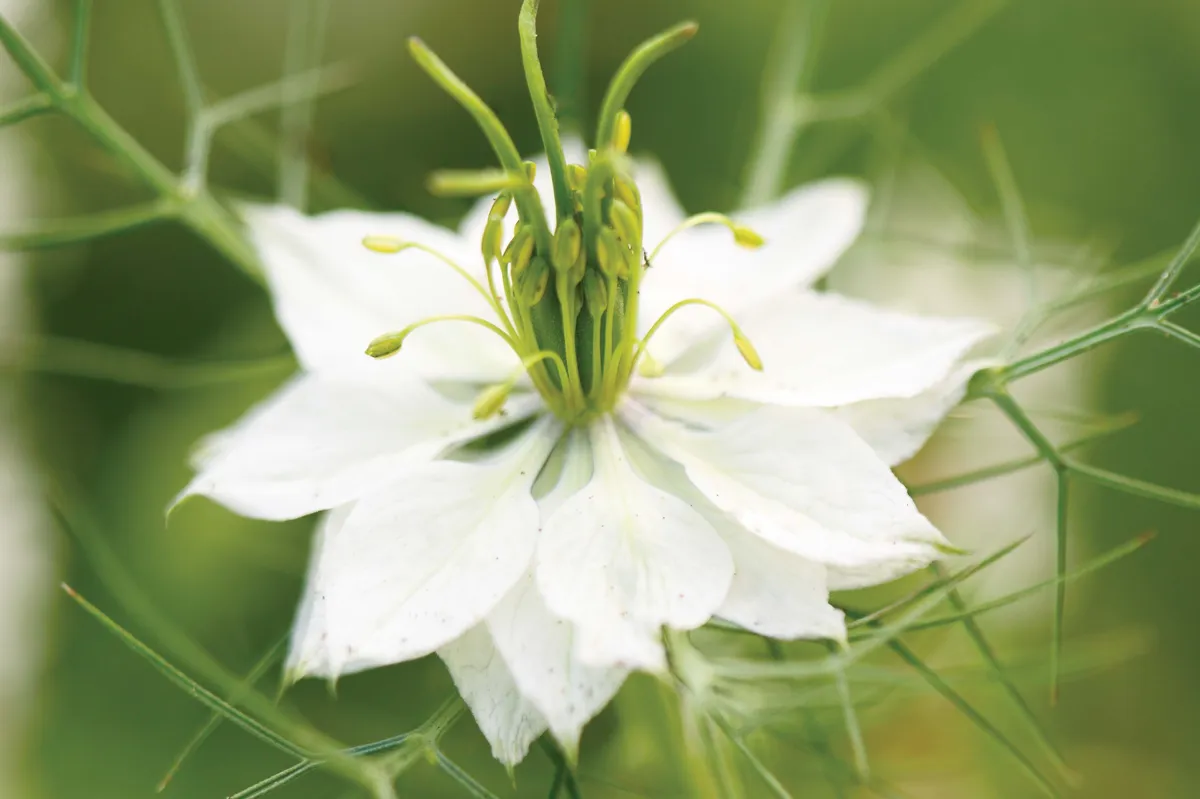
Will self-sow liberally under almost any conditions. It's good to retain a mixture of spring- and autumn-born plants as this will extend the season, which can be extended still further by a sowing in June. Take care not to smother emergent plants and thin out to 20cm. H 50cm. S 20cm. AGM. RHS H7.
Lychnis flos-cuculi var. albiflora
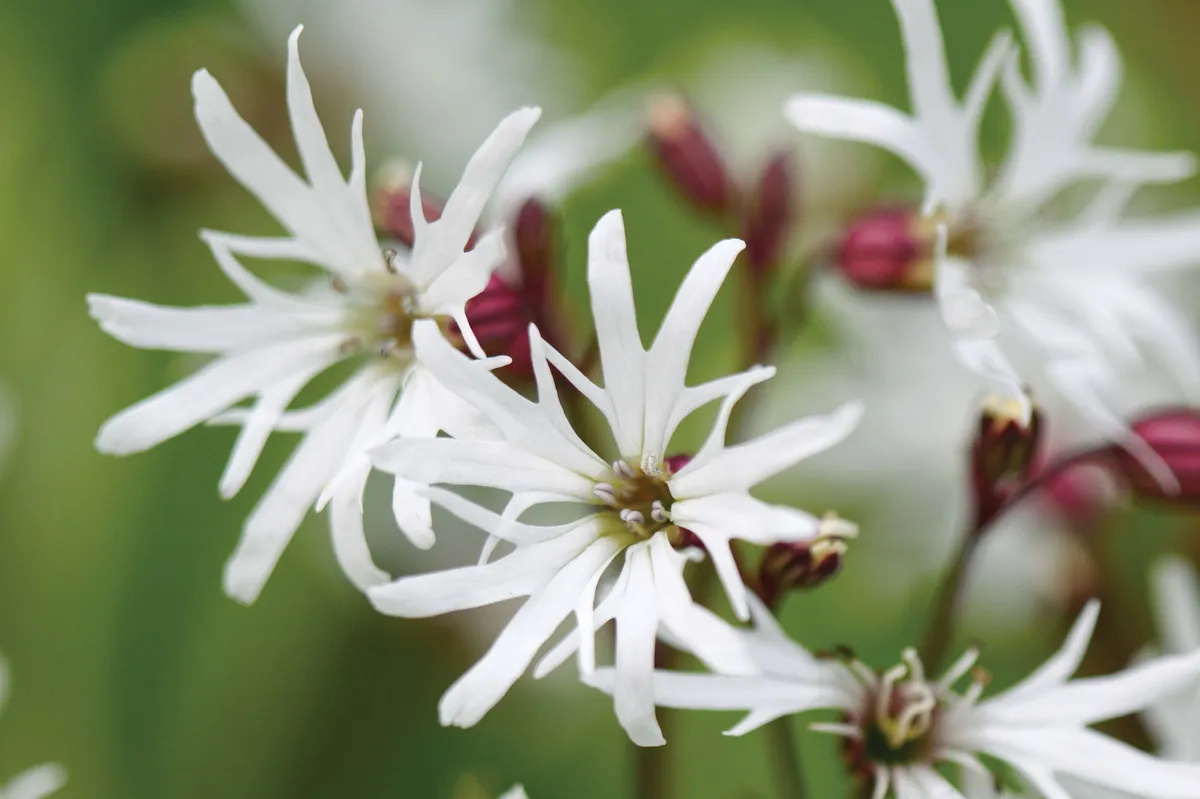
An obliging self-sower, with clear white flowers composed of forked petals that sit atop leafless, branching stems. A short-lived perennial that's treated as a biennial. Any pink seedlings should be removed as soon as they appear. Of the two forms available, one has black stems, the other green. The latter is better suited to the White Garden. H 60cm. S 20cm. RHS H7.
Lupinus arboreus 'Snow Queen'
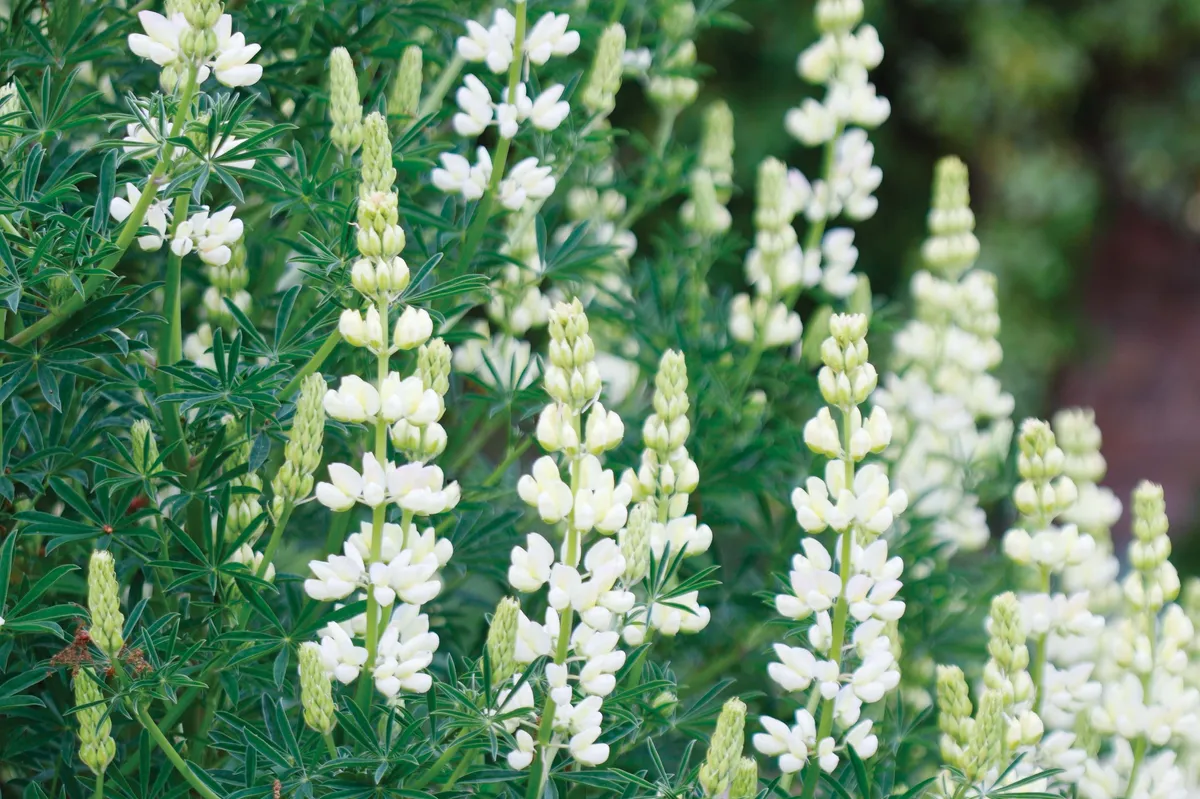
Fast-growing shrub, smothered from head to toe with thousands of delicate candle-like spikes. Tends to flower itself to an early death but it is soon replaced. H 2m. S 2m. RHS H4.
Orlaya grandiflora
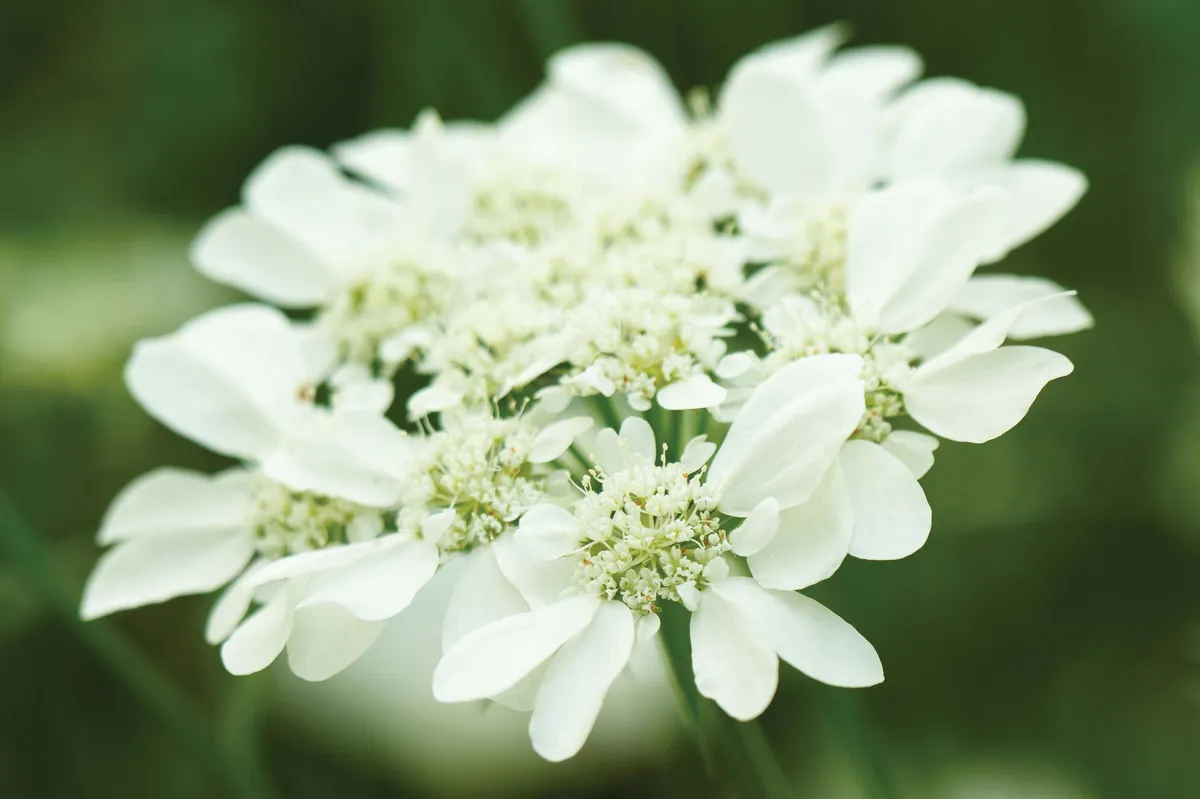
Here is a plant that always excites interest. The flowers have a lacy appearance reminiscent of small doilies or large snowflakes and are produced in succession on a delicate leafless frame. It may be planted en masse, or woven among clumps of late perennials. Its delicacy won't impose on its neighbours, which can then take over as the Orlaya melts away. H 60cm. S 50cm. RHS H7.
White flowers for high summer
Sidalcea candida
Buy from Claire Austin (£5.80)
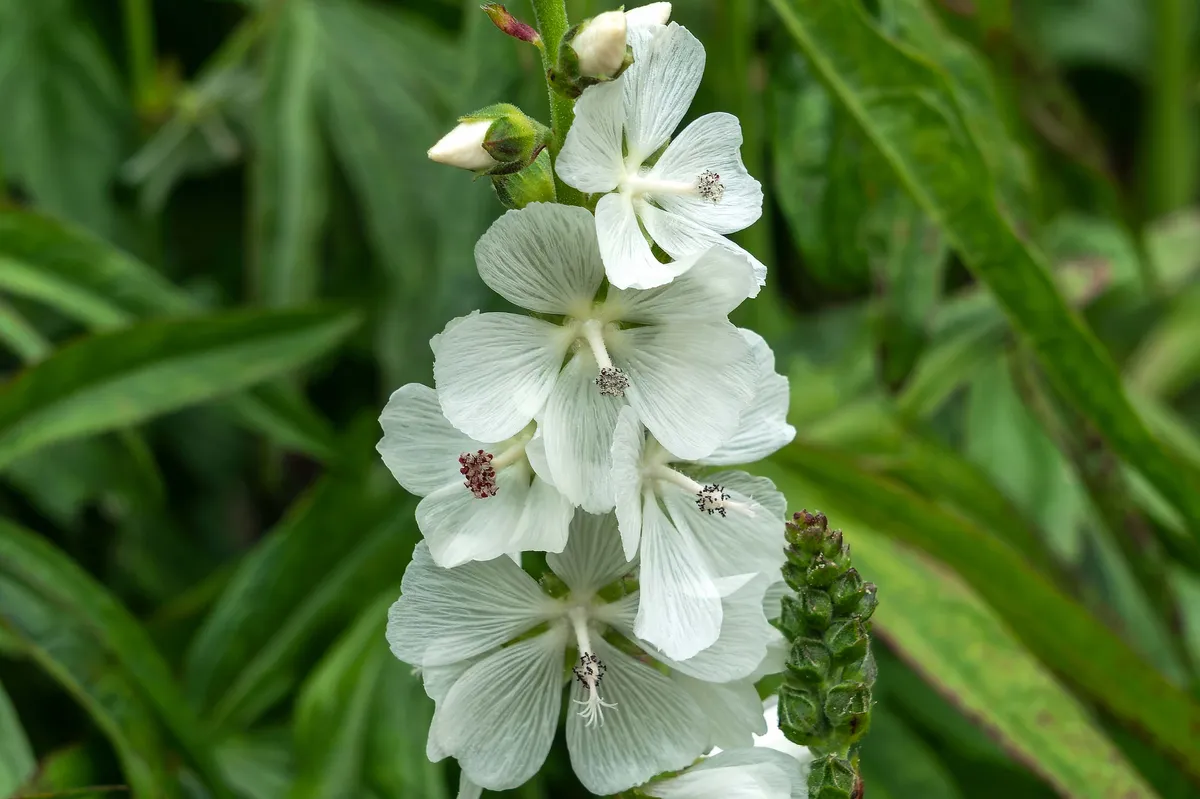
This rhizomatous perennial has its flowering stems well spaced, which allows light to penetrate the diaphanous white flowers that look especially good backlit by a fading sun. Support with brushwood is essential. Can be cut back to the ground after flowering and interplanted with late-summer bedding. H 90cm. S 60cm. RHS H7, USDA 5a-9b.
Borago officinalis 'Alba'
Buy seeds from Crocus (£2.79), Primrose (£2.75) and Sarah Raven (£3.25)
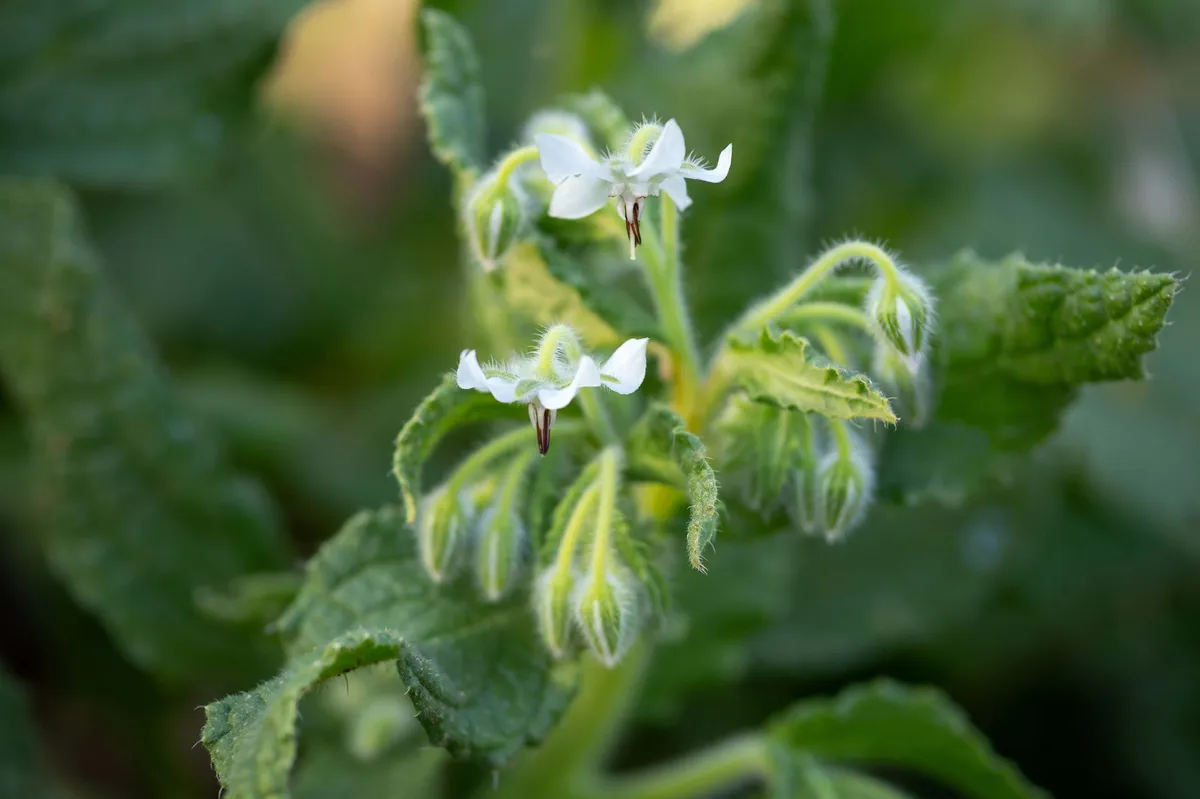
A promiscuous self-sower that can crop up in surprising and useful places, such as a crack in a path. Be prepared to weed a few out. There are two forms of white borage in cultivation: the shorter-leaved form is preferable as its progeny are reliably white. H 40cm. S 20cm. RHS H5.
Onopordum acanthium
Buy seeds from Sarah Raven (£5.50)
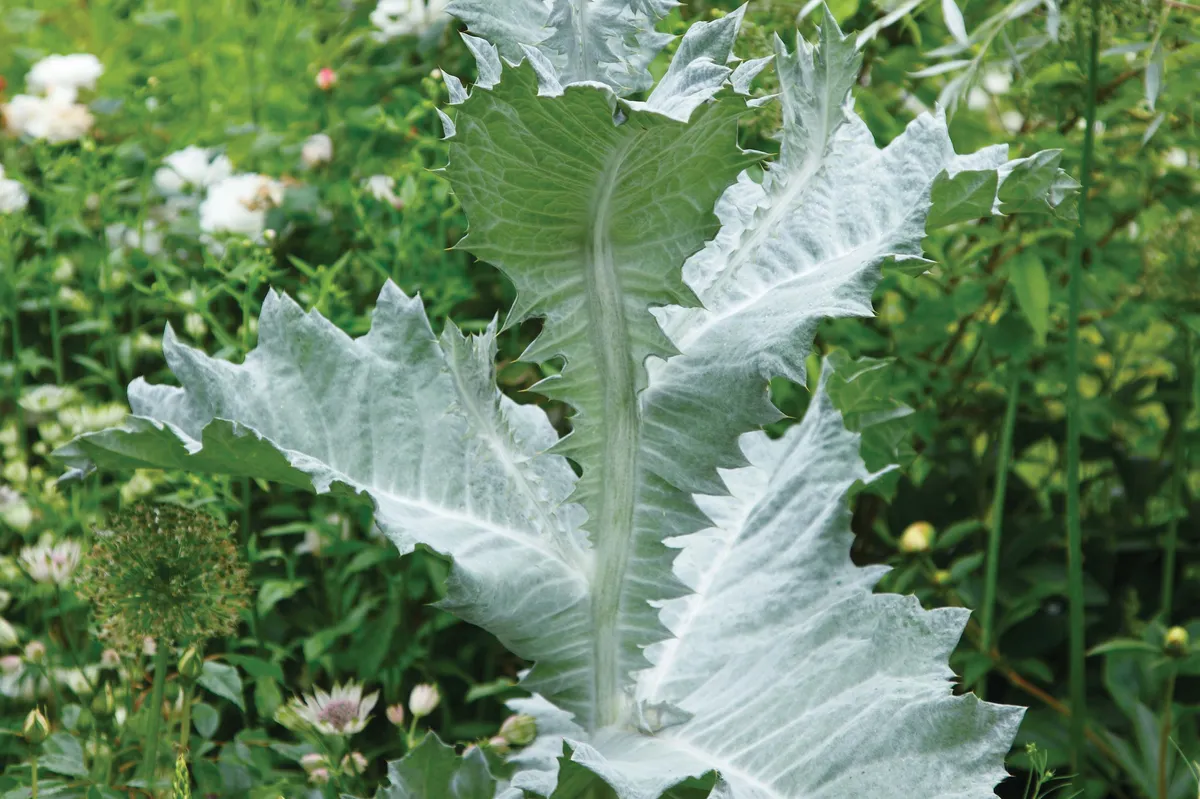
A tall, biennial thistle with spiny, jagged stems and leaves, covered in a silvery indumentum that gives this remarkable plant a sculptural presence. Flowers are typical purple thistle heads, but don't impose unduly on a white theme. Staking is recommended, and the whole plant should be ruthlessly removed when it starts to age. H 2m. S lm. RHS H6, USDA 3a-9b.
Ammi majus
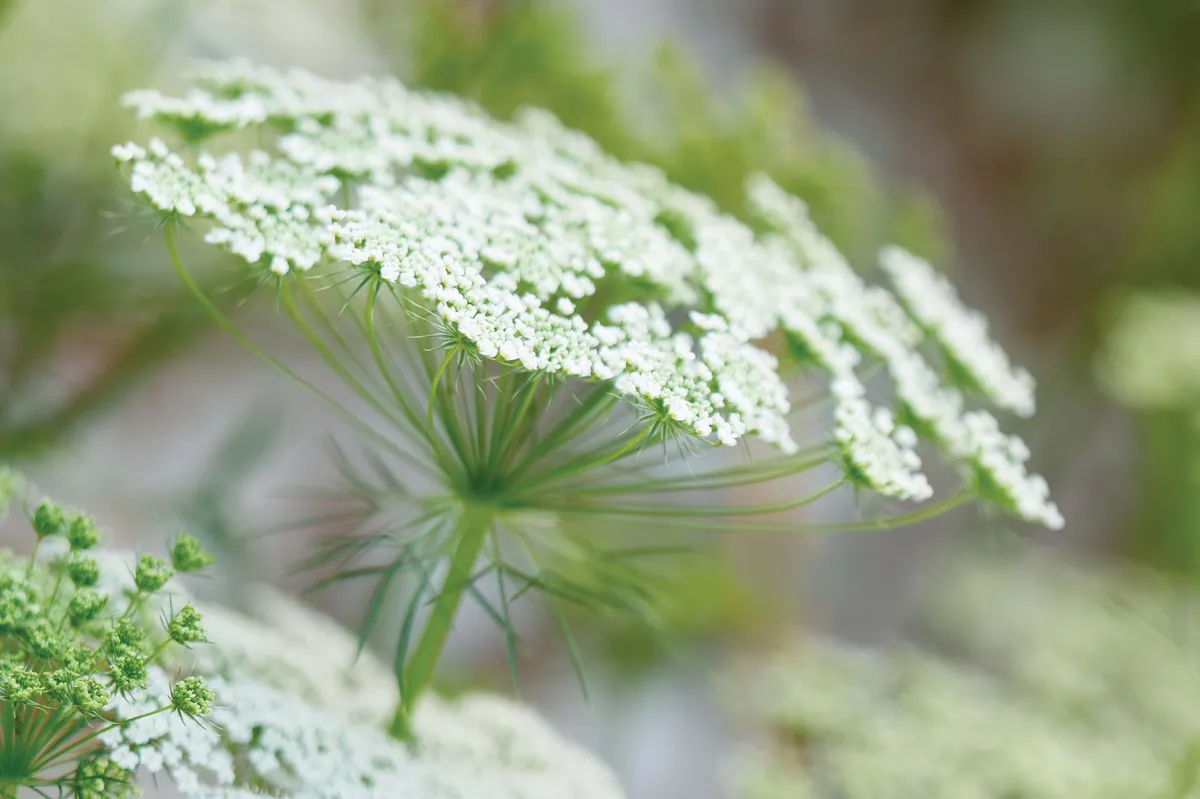
Everything we admire about cow parsley is enhanced in this giant umbellifer. It has a wonderful structural quality and a graceful,airy habit. The best plants are obtained from September-sown seed. Over-winter seedlings in a cold frame. H 1.4m. S 1m. RHS H5.
Digitalis purpurea f. albiflora
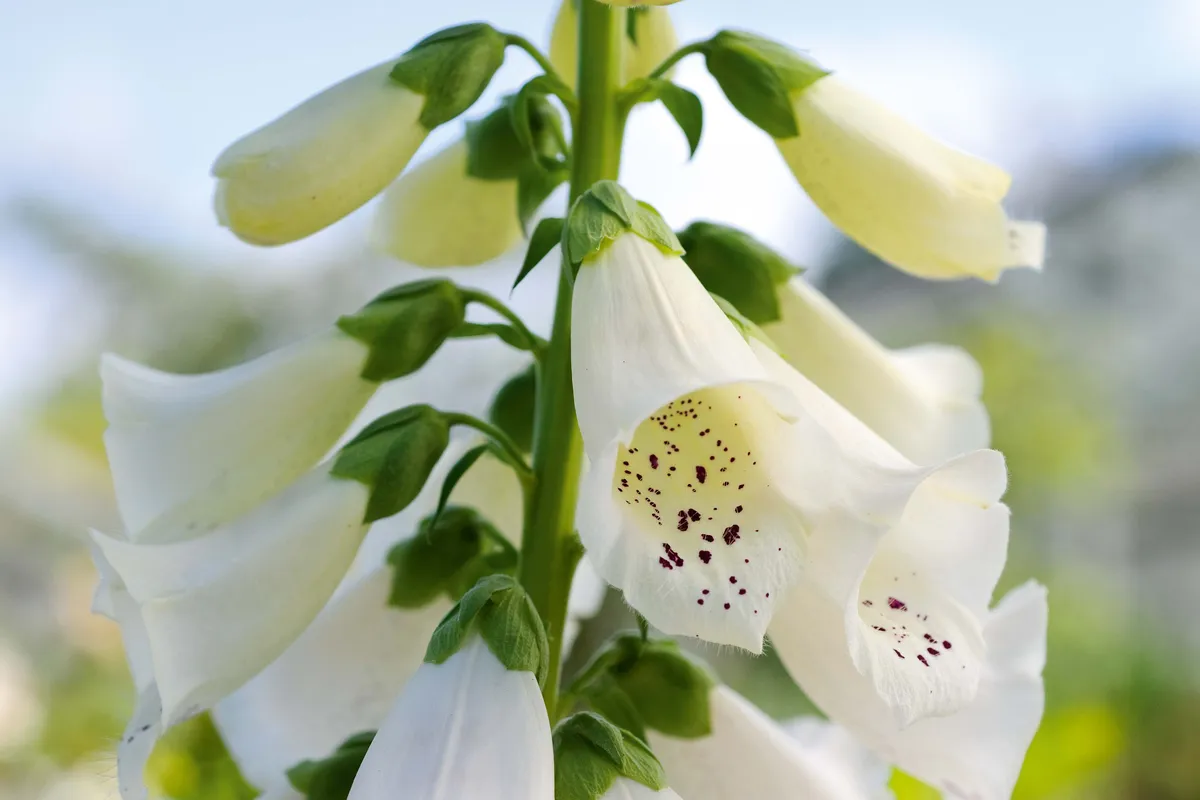
If you weave individuals through other plantings, they'll function like steeples breaking up a low cityscape and will lead the eye from one area to the next. Once planted will self-sow, and seedlings should be thinned to individuals 30cm apart. H 2m. S 30cm. RHS H6, USDA 4a-9b.
Here's everything you need to know about growing foxglove
Eryngium giganteum
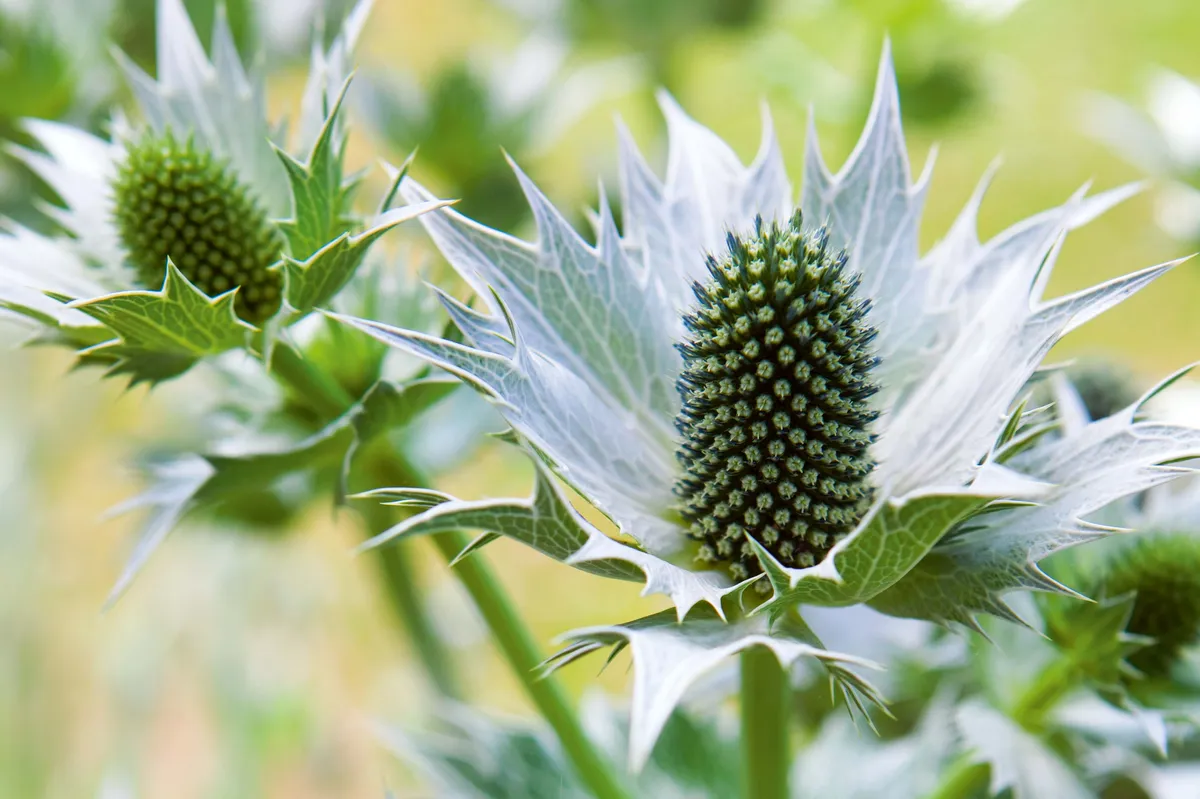
Once established, this desirable monocarpic sea holly will self-sow throughout the garden. Initially the developing stems and young flowers are pale green and soft to the touch; but the whole plant will age to a silvery hue, and the leaves and ruff-like bracts will harden and become prickly. H 90cm. S 30cm. AGM. RHS H7, USDA 5a-8b.
Don't miss our eryngium plant profile
Chamaenerion angustifolium 'Album'
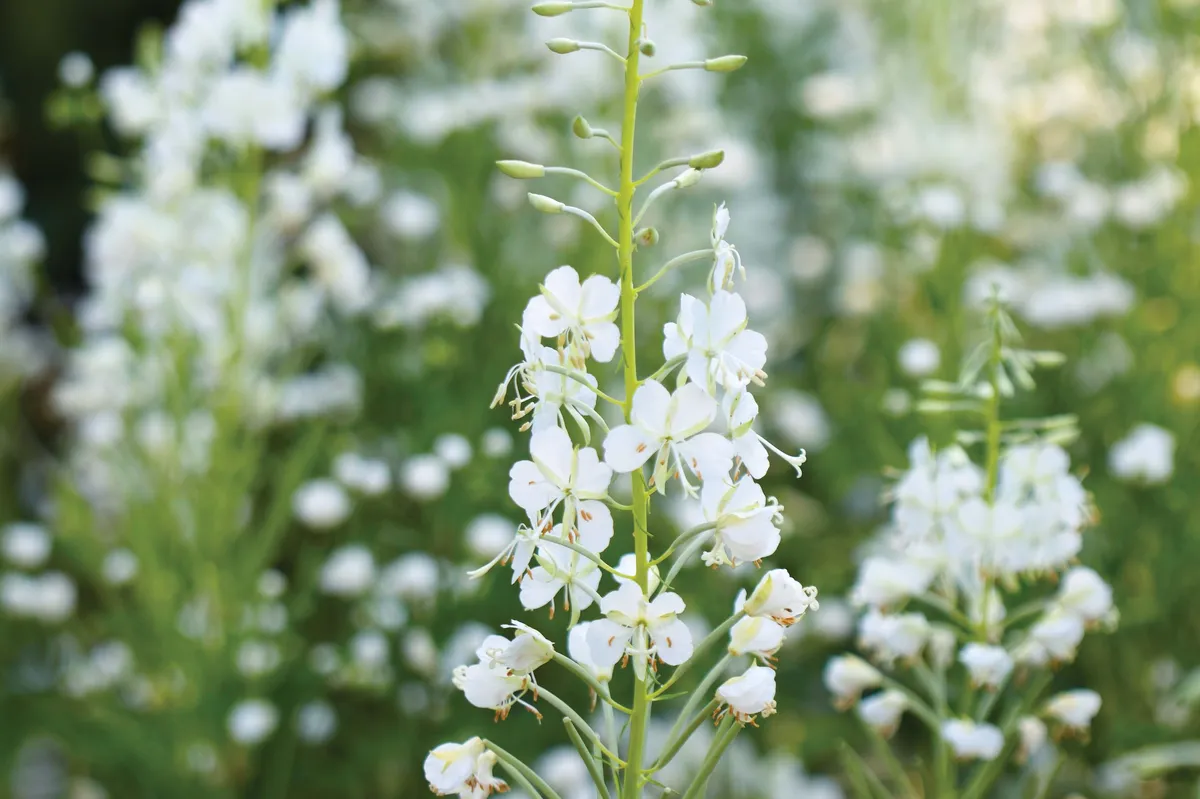
The white form of the rose-bay willowherb is about as thuggish as its wild equivalent and needs to be restrained. Flowers are produced on long stems and the pale-green seed capsules subtending the flowers also contribute to the display.Plant with Ammi majus for an elegant combination of umbels and spikes. H 1.5m. S 1.5m-plus. RHS H7, USDA 4a-9b.
Lychnis coronaria 'Alba'
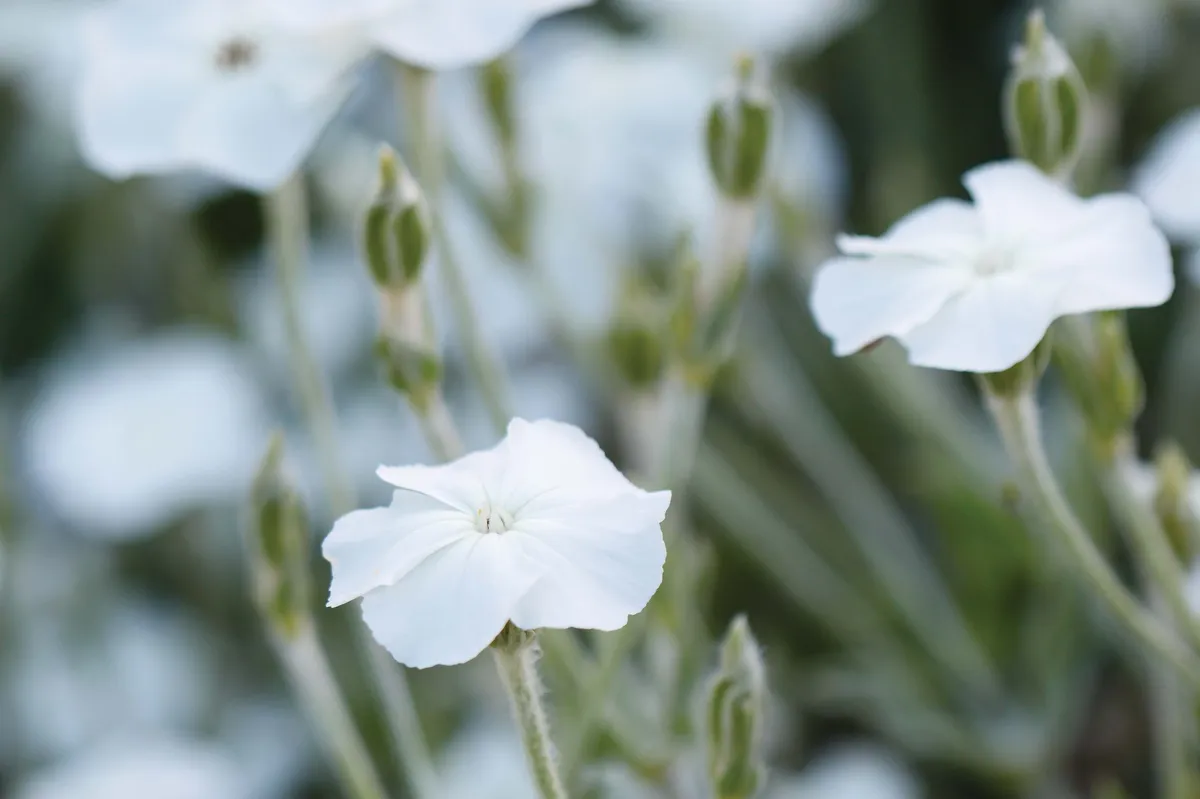
With clean, grey foliage and clear, white flowers, it's the perfect White Garden plant. It also self sows prodigiously and will flower in its second year from seed. After flowering, plants usually weaken and should be removed. Makes a good contrast with lighter plants, such as Orlaya grandiflora or Nigella damascena 'Miss Jekyll Alba'. H 60cm. S 45cm. RHS H7, USDA 3a-9b.
Ammi visnaga
Buy seeds and plants from Sarah Raven (from £1.95)
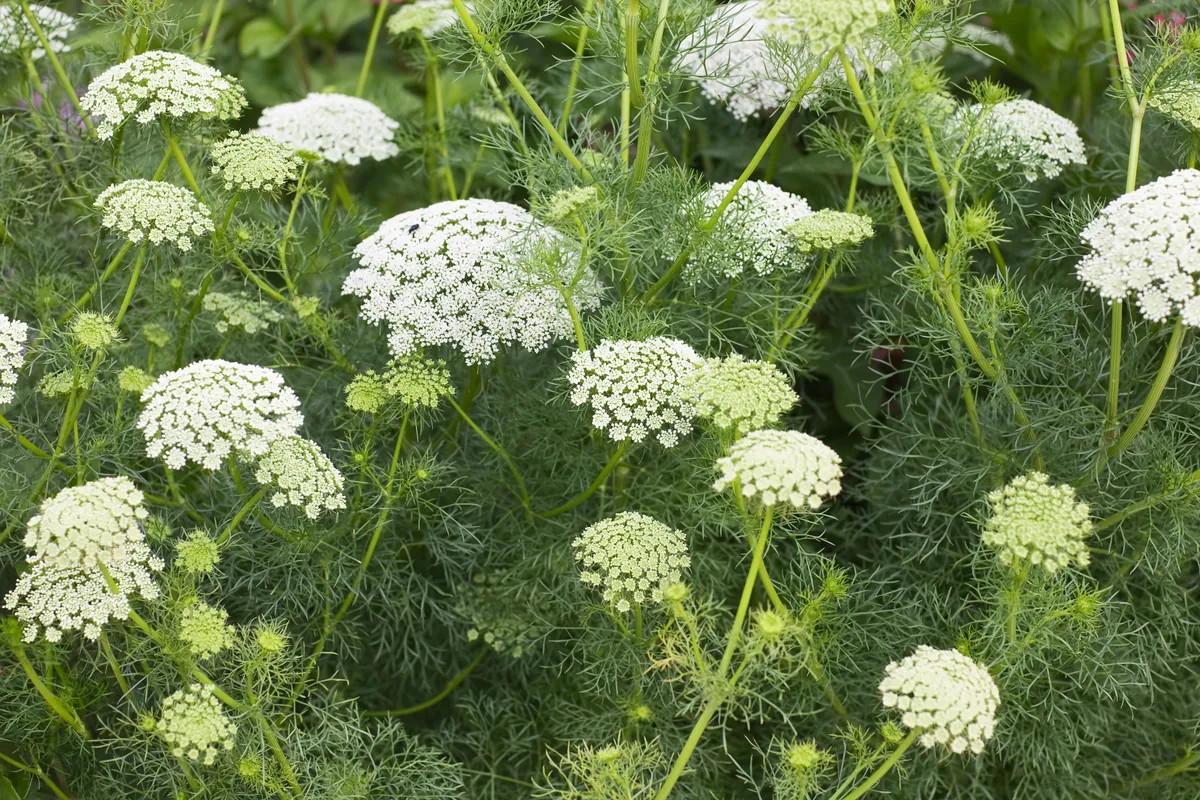
Another annual ammi. Whereas Ammi majus is spare and open in habit, hardly bearing leaves at all, Ammi visnaga excels as much for its voluminous clouds of lacy foliage as for its floral contribution. Their glossy green makes an excellent backdrop for other white flowers in the foreground. Sow in April. H 1.5m. S lm. RHS H4.
Clematis 'Alba Luxurians'

A vigorous clematis that works well rambling through Hydrangea paniculata or Elaeagnus 'Quicksilver'. Flowers, which are white with green tips and a hint of mauve, are produced from summer to autumn on the current season's growth. Prune the previous year's stems hard in early spring. H 4m. S 1m. RHS H5, USDA 3a-9b.
Here's everything you know about clematis montana
Thalictrum delavayi 'Album'
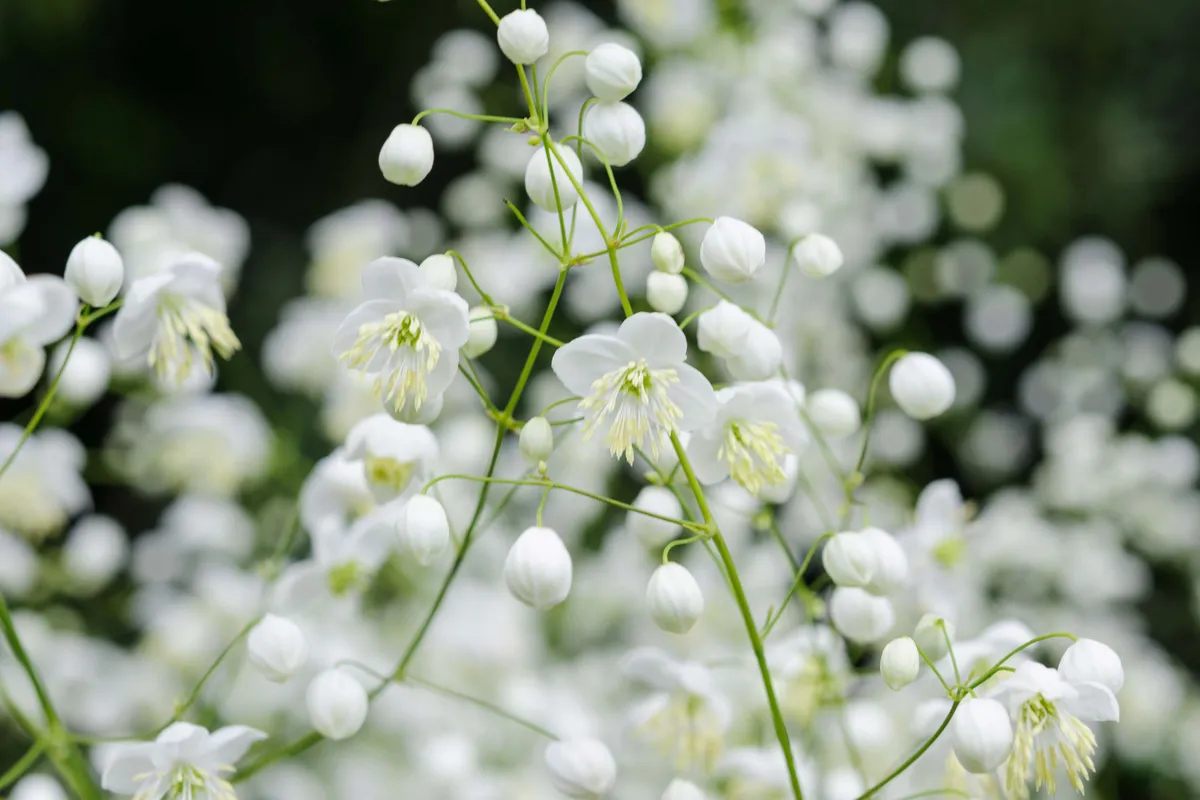
Although tall. it is slender and diaphanous and does not display 'ugly legs' later in the season – so it needn't necessarily stand at the back of the border. H 2.5m. S 40cm. RHS H7.
Don't miss our thalictrum plant profile
White flowers for late summer
Sium sisarum
Buy from Beth Chatto (£8.00)
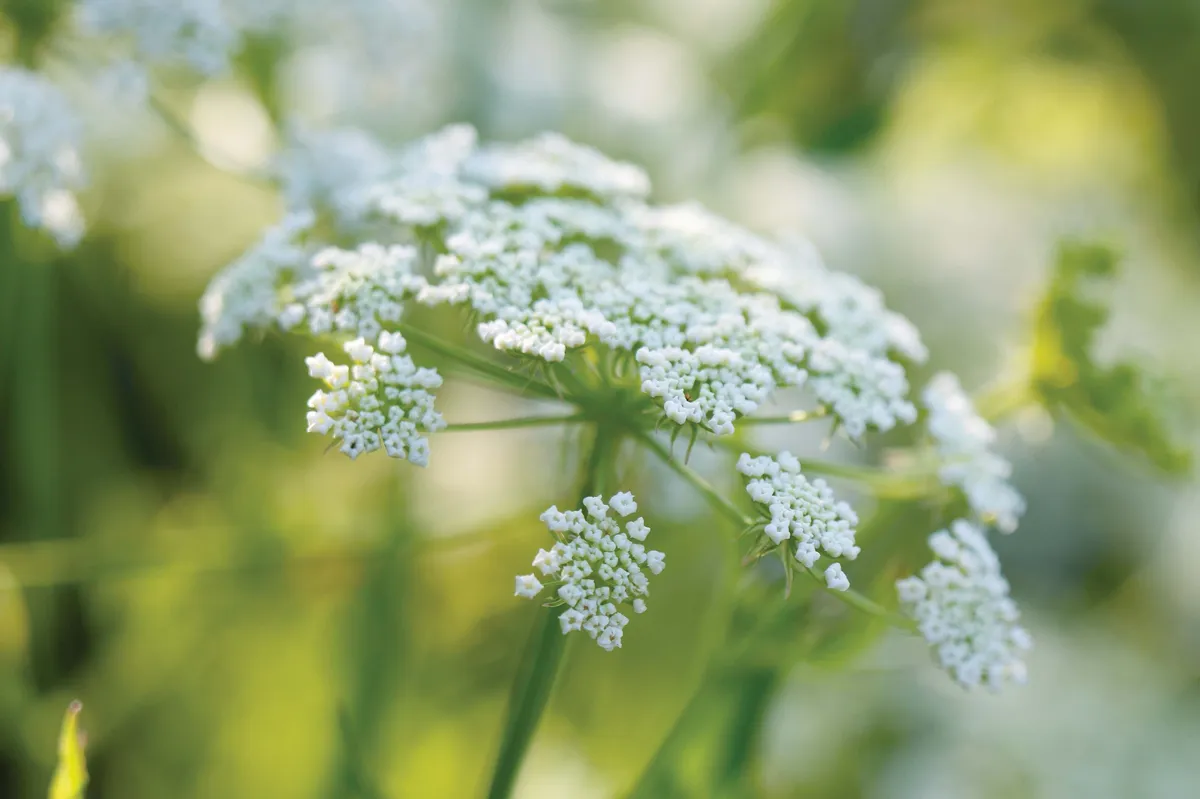
Useful late perennial member of the carrot family, with masses of small white umbels, suitable both for the front or the back of the border. It may need the support of a discreet short cane, otherwise it is trouble free. H 1.6m. S 50cm. RHS H7.
Veronicastrum virginicum 'Diane'
Buy from Beth Chatto (£8.00)
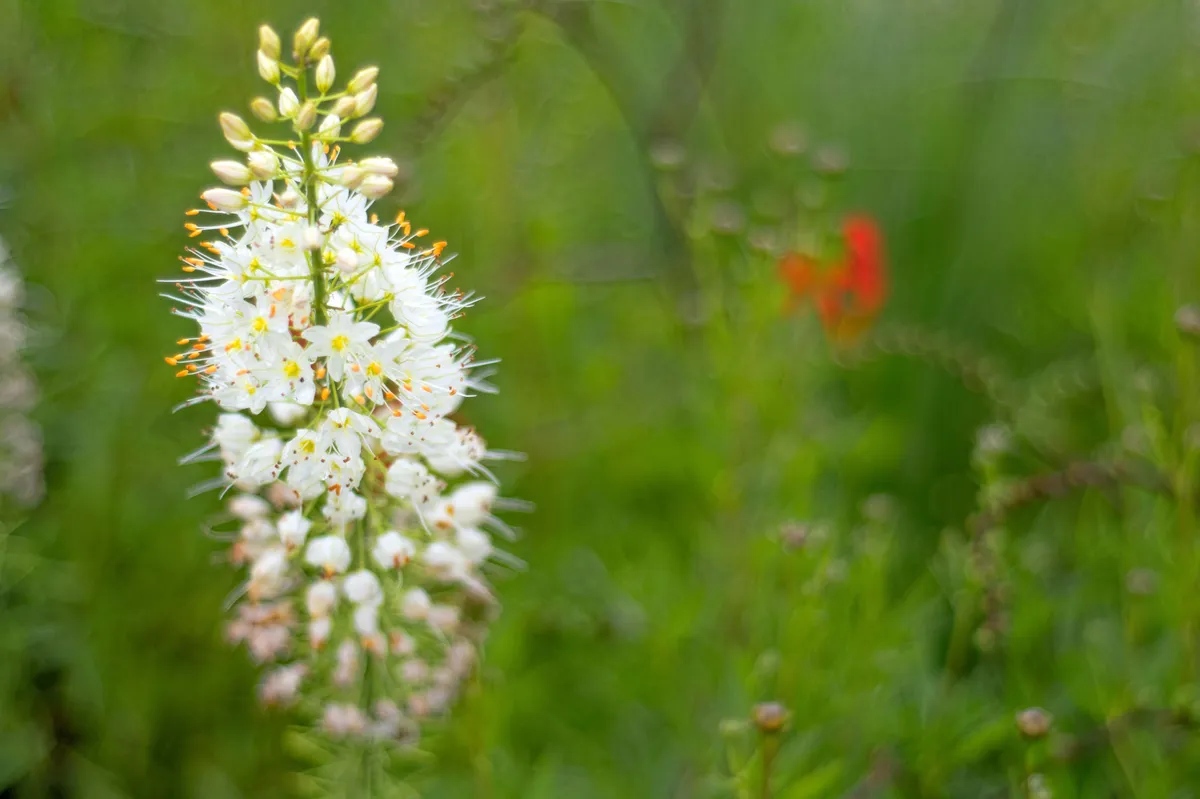
Slightly shorter of the two white forms of Veronicastrum virginicum in cultivation. It's a slender, upright plant that combines well with alliums or umbels. Protect emerging stems in the spring from heavy competition. H 1.35m. S 60cm. RHS H6.
How to grow veronicastrum
Browallia americana f. alba
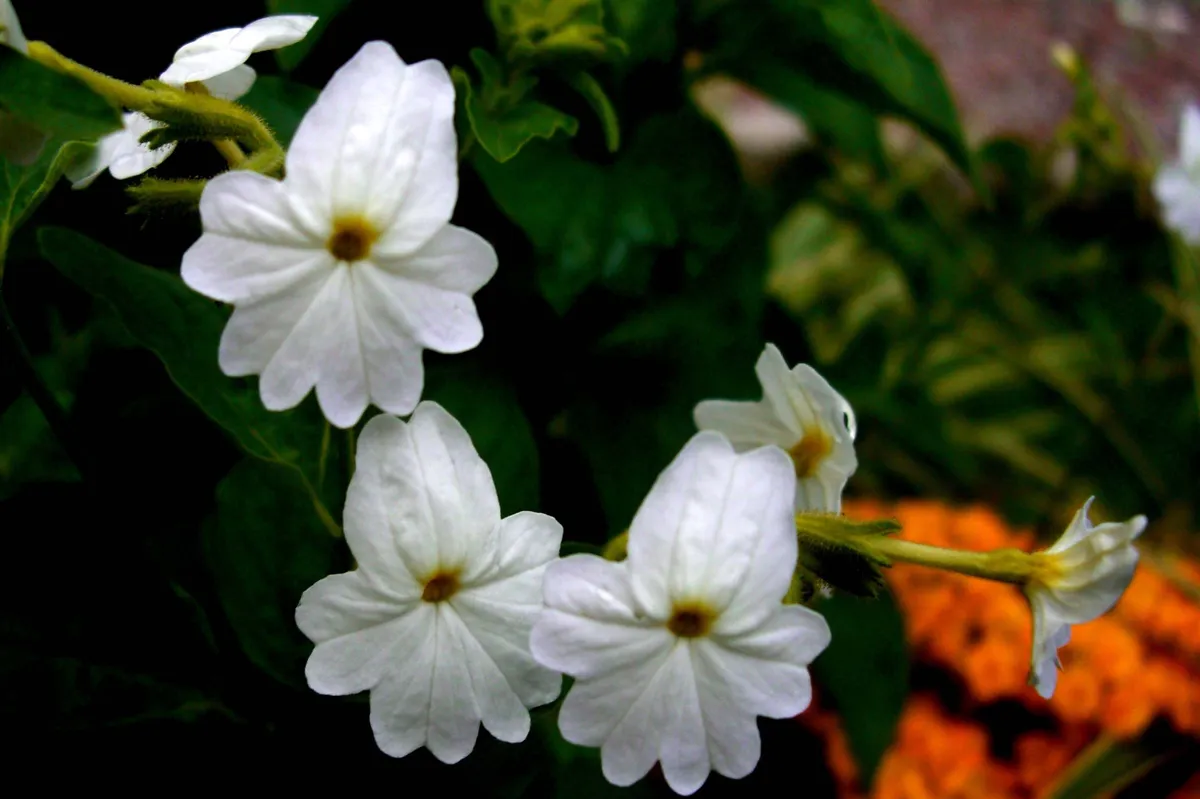
Good for filling in the spaces left by aestivating bulbs or for taking over from early summer annuals, such as Orlaya or Nigella. This white form of the bush violet is a long-flowering annual with small, white flowers, easily worked into a mixed border setting. Self-cleaning. H 60cm. S 40cm. RHS H2.
Cleome hassleriana 'Helen Campbell'
Buy seeds from Thompson & Morgan (£1.00)
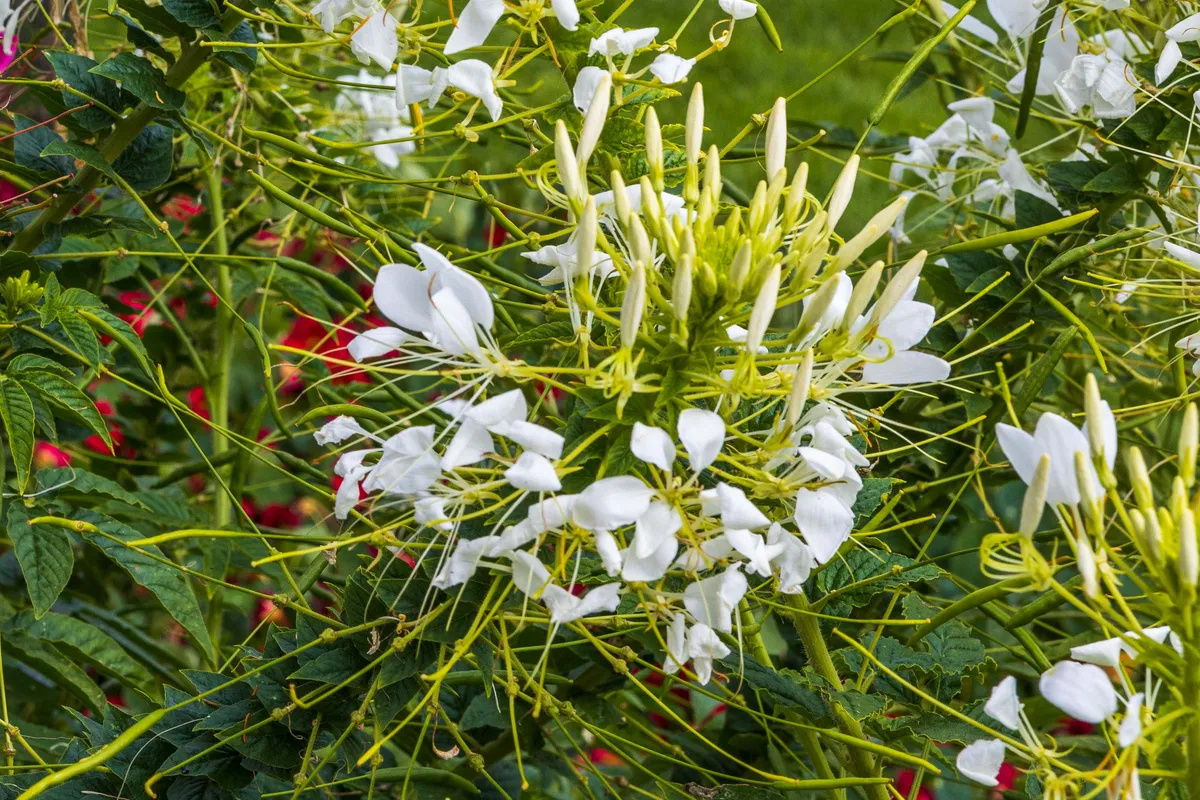
The airy arrangement of spidery flowers and horse chestnut-like leaves make this an unusual but elegant looking annual. The seedlings respond badly to seemingly minor checks in their growth, so try and ensure that their transition from greenhouse to border is smooth. Germinate in late April or early May. When ready, plant 60cm apart in drifts; flowers are self-cleaning. H 1.5m. S 60cm. AGM. RHS H2.
Solanum laxum 'Album'
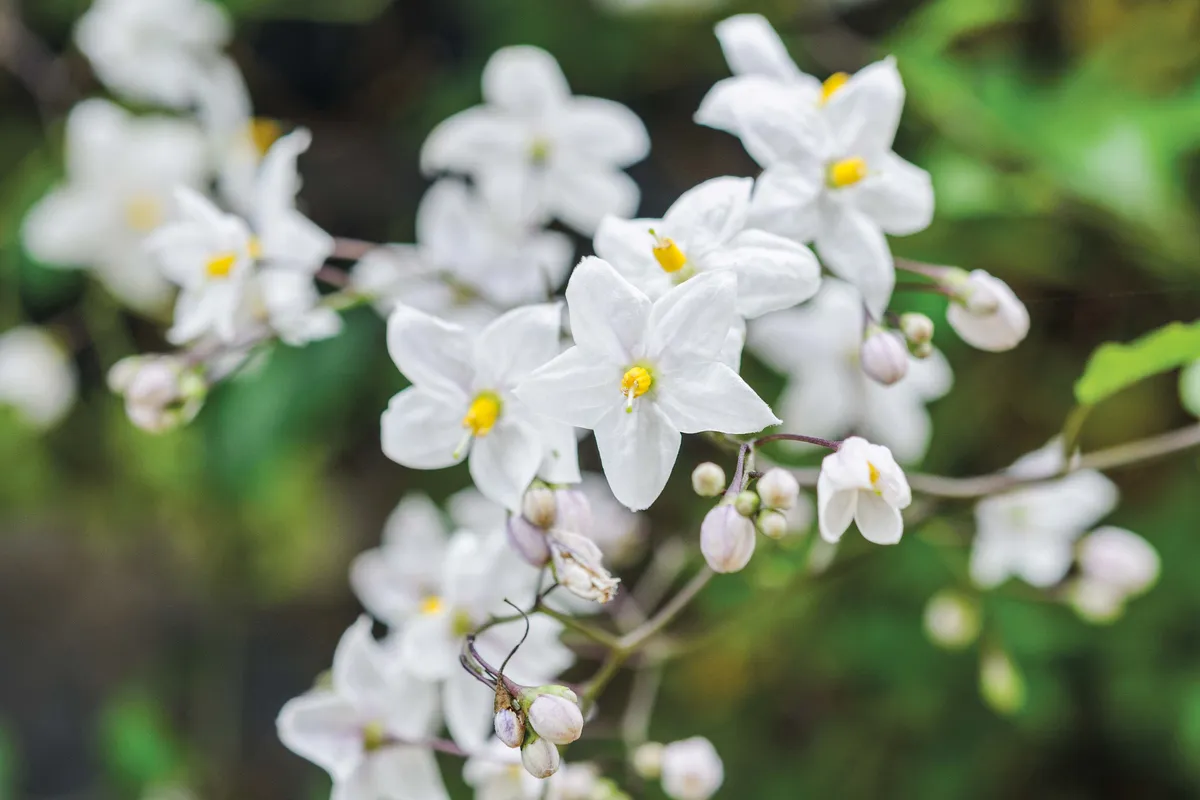
This climber can be trained up a pole to add a vertical element without taking up too much lateral space. In spring prune back hard to a framework, to encourage new growth from which clusters of bright, white flowers are borne well into the autumn. Safest in a sheltered spot. H 5m. S lm. AGM. RHS H3.
Here's our round up of the best climbing plants
Aster umbellatus
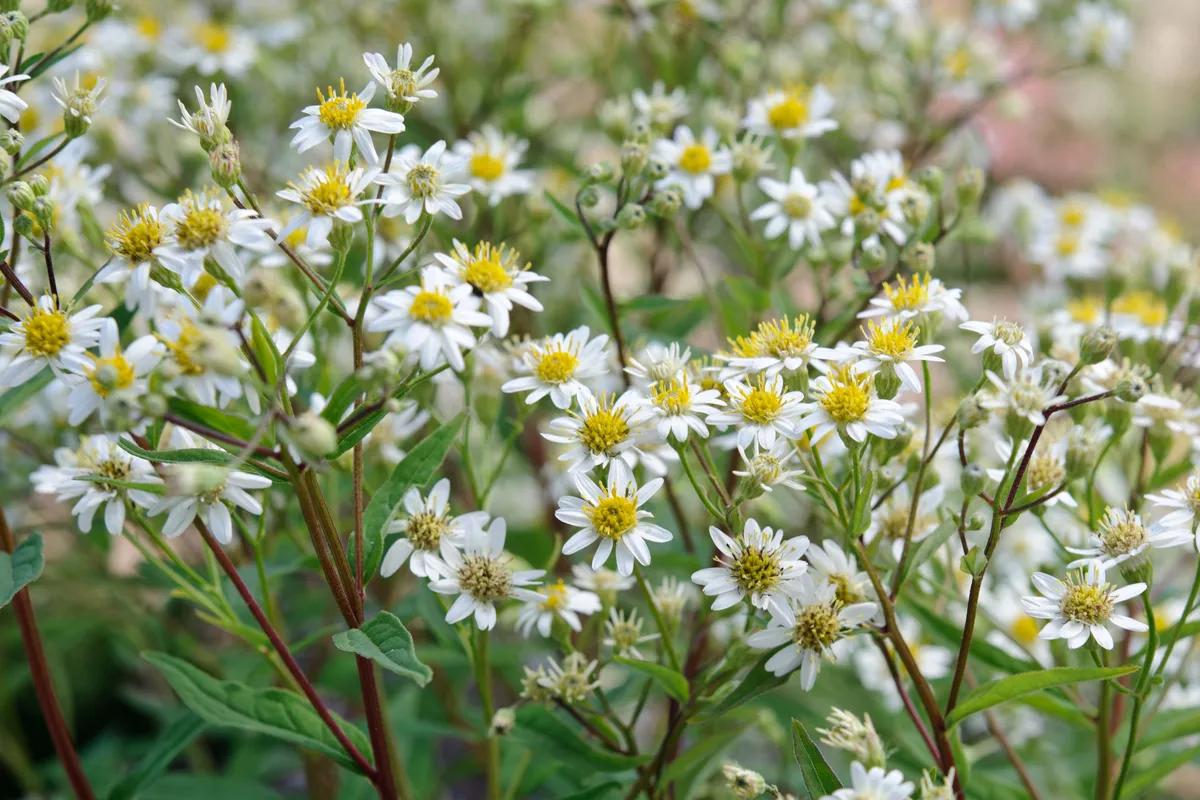
A self-supporting aster with tiny, white daisy flowers from August to September. Clumps of asters can leave quite a lot of space around them so try planting winter-growing, white oriental poppies among them for a successional display. This species is completely trouble free. H 1.5m. S 60cm. RHS H7.
How to grow michaelmas daisys
Cosmos
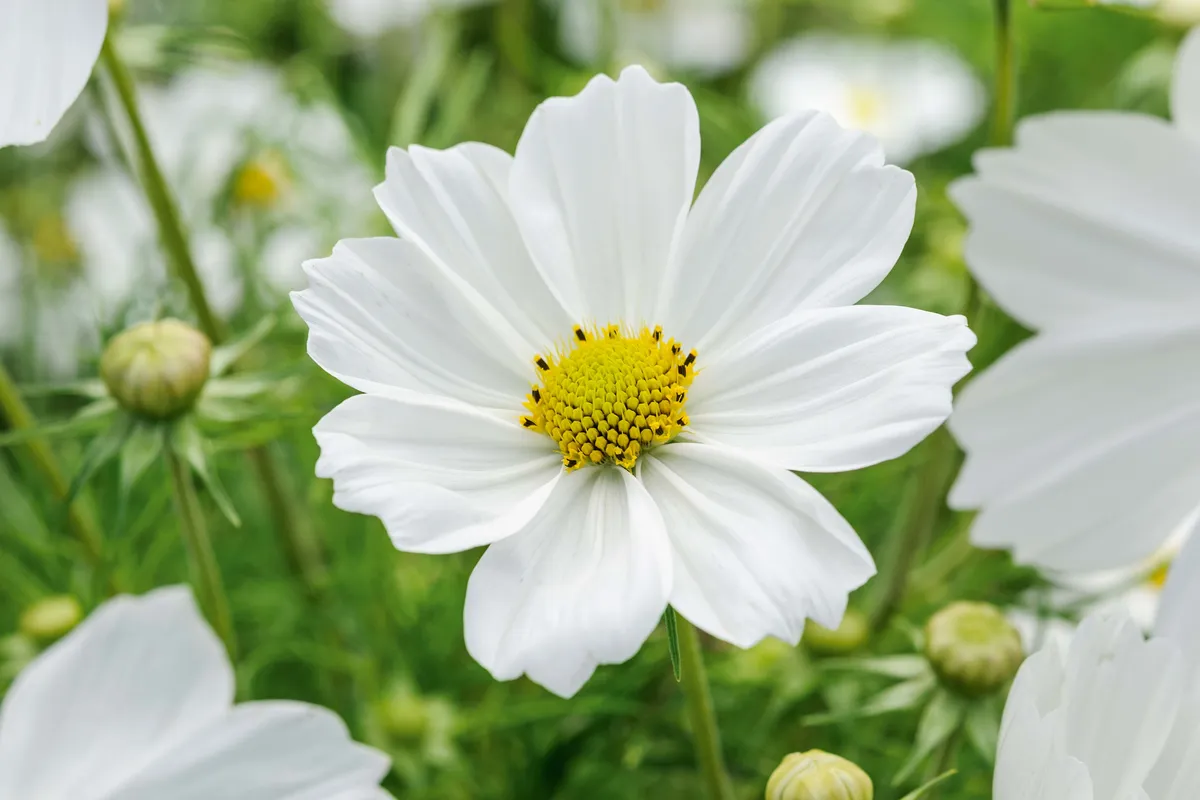
Sow late April to early May and pot seedlings on quickly. Plant in groups, 50cm apart, and feed the soil lightly to sustain rapid growth and flowering. Even the shorter forms will need support and deadheading will keep the show going. H 1.5m. S 50cm. RHS H1c.
Read our guide to cosmos
Erigeron annuus
Buy from Great Dixter (£5.00)
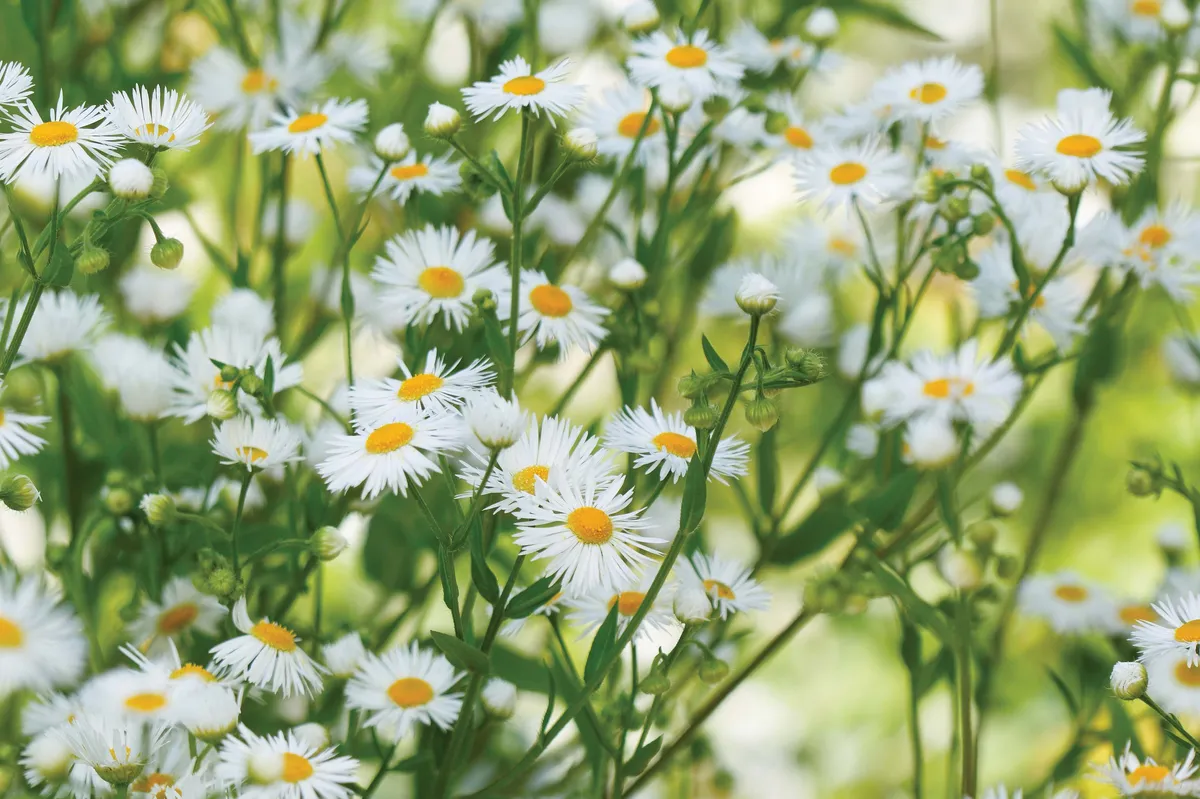
This annual daisy has recently surged in popularity. It flowers from June to November and without any deadheading looks almost as fresh at the end as the beginning. Disease-free, it volunteers prolifically and the seedlings require significant culling. Will likely need staking. H 1.5m. S 40cm. RHS H7.
Lathyrus latifolius 'Albus'
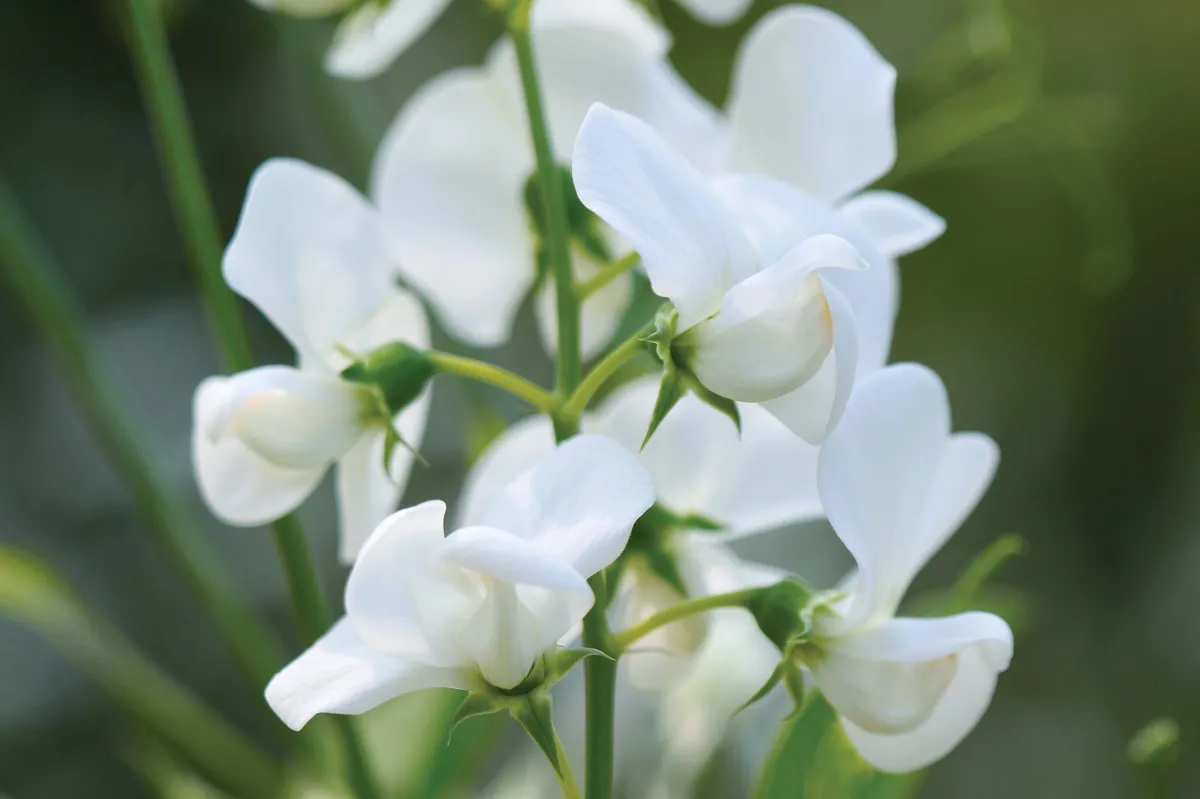
This white, everlasting pea produces racemes of large, white flowers throughout the summer months. Although it can be slow to establish, once it gets going it is competitive enough to climb its way through quite dense shrubs and perennials. Grow up a spring flowering shrub to add a further season of interest or combine with a silver-leaved host. H 3m. S 70cm. RHS H7, USDA5a-9b.
Here's our guide to sweet peas
Hydrangea paniculata
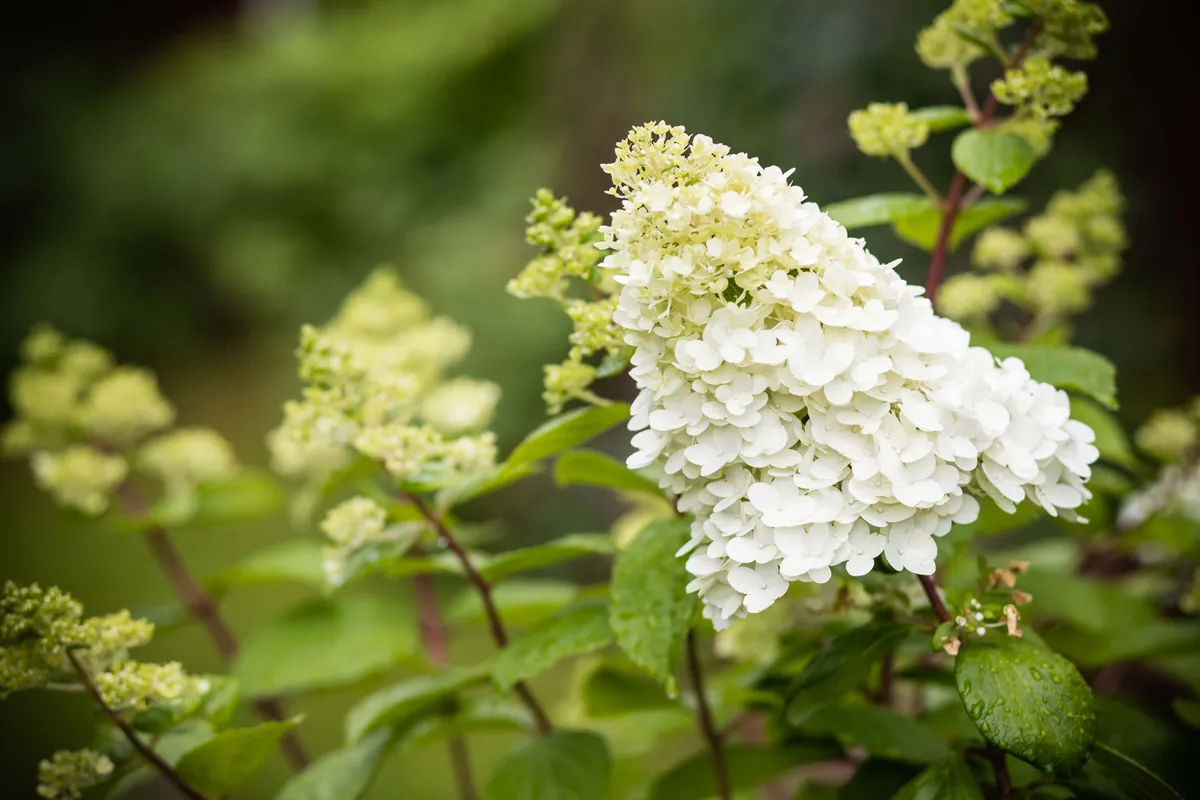
Deciduous shrub producing conical flower spikes borne on the tips of the current season's growth. Prune back hard to a framework in early spring and feed well to encourage vigorous growth and larger flower heads.H 2.5m. S 2.5m. RHS H7, USDA3a-8b.
Petunia axillaris
Buy seeds from Chiltern Seeds (£2.95)
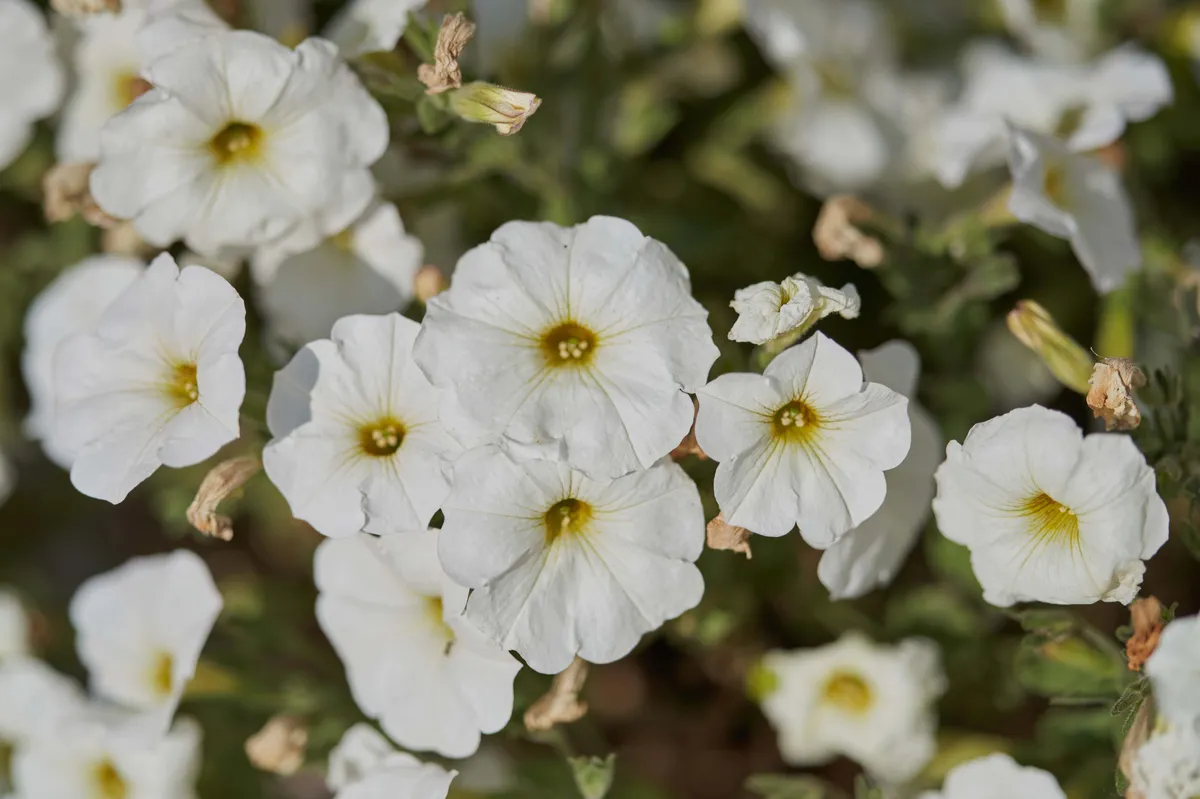
This scented white petunia with an upright branching habit is quite unlike the recumbent hybrids we're used to. It will keep flowering well into autumn, and requires no more than gentle support with twigs to keep it steady. Sow indoors in late April and plant out in June. H 40cm.S 50cm. RHS H2.
How to make your white flower border last longer
One important way to do this is to make sure that a certain proportion of the plants you use look showy over a long period. Structural plants, such as Cornus alternifolia ‘Argentina’ and Astelia chathamica, never really have and off season and will anchor the more ephemeral and dynamic elements of the planting.
The annual hard pruning of subjects such as Salix exigua and Rubus thibetanus will prolong their season of active growth and keep them fresh and vigorous until the end.
We are fortunate in the UK that our generally indeterminate, maritime climate permits the culture of plants from a wide variety of climate zones. There are the Mediterranean plants, for instance, which tend to complete their growth cycles from winter to spring; whereas the prairie plants that make up the bulk of our herbaceous perennials start their growth late in the spring and grow throughout the summer.
We may harness these complementary growth patterns: the cardoon (Cynara cardunculus) for example, has established a dominant and invaluable presence at tulip time when most foliage plants are barely getting going.
By the time it begins to run up to flower in June, its basal leaves, the vegetative engine of the plant, will have completed their growth cycle and the base of the plant will tolerate shade. And you will certainly want to hide the ‘legs’ of the plant as the summer progresses, for they become increasingly tatty and bare.
If you plant a late-starter, such as Veronicastrum virginicum ‘Diane’, in front of it, this will provide the necessary shield, without competing unduly for light. In addition, the spaces arena the Veronicastrum in spring allow opportunities to plant tulips or alliums that will show up beautifully against the back-drop of the burgeoning cardoon.
Keen observation of the growth patterns of your favourite plants will allow you to create ‘partnerships’ such as these that bring the best out of your plants and prolong the season of interest.
A further approach to providing succession is to use bedding plants. You can designate parts of your border solely for bedding, which will integrate with the rest of the display as long as the footprint of the area is not too ‘blocky’.
Alternatively, you can use bedding plants opportunistically among permanent plantings, to fill temporary gaps at either end of the season. Once again, these partnerships must be carefully attuned to prevent undue competition.
Use delicate annuals, such as Nigella damascena, Omphalodes linifolia, Orlaya grandiflora or Myosotis sylvatica ‘Snowsylva’ among nascent perennials and they will not inhibit their growth, but rather melt away (or be removed) as required.
Looking for 100 beautiful flowers?